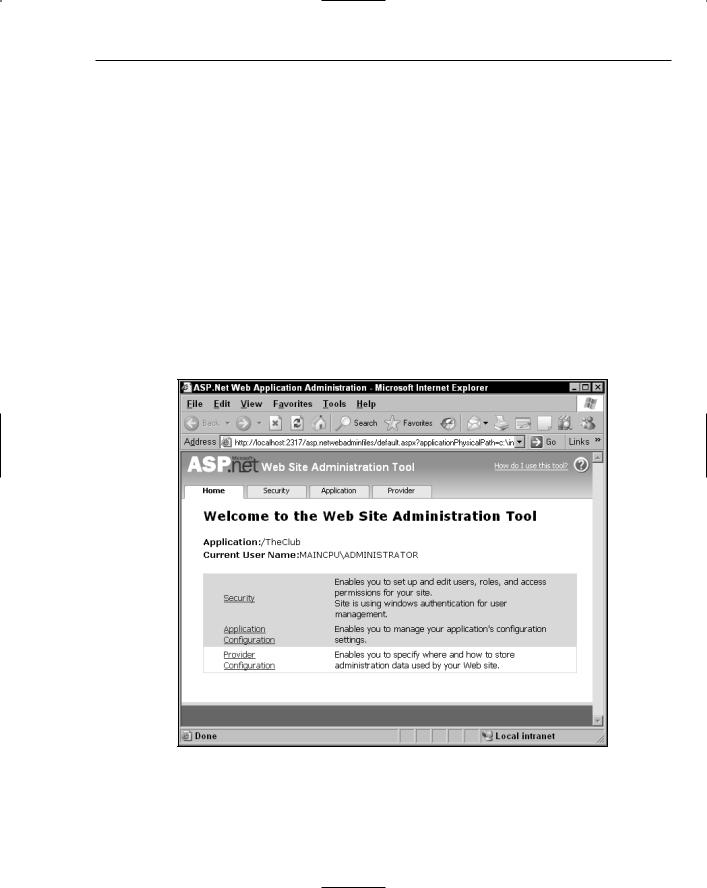Chapter 18
separate from the tasks of developing the actual intranet site. What happens is that IIS requires the user either to be logged into the server’s domain to log in with a valid domain account. If the user is already authenticated with a valid domain account, access to the site is seamless with no interruption to the user experience. When the user is not logged into the server’s domain, a valid login is required. This method of authentication is set up via the IIS Management Console.
Forms Authentication
For a public Web site, forms authentication is an easy solution to implement. Users that visit the site must provide credentials to gain authorization to the site. When an unauthorized user requests a Web page, the user is redirected to the login page. From here, a current user can log in, or new users can click a link to create an account. Without a valid user name or password, the visitor cannot browse secured areas of the site. With ASP .NET 2.0, built-in controls make forms authentication quick and easy to implement as a security model.
Web Site Administration Tool (WAT)
ASP .NET 2.0 is driven by web.config files. In the past, developers had to hand-code the XML configuration files to set up functionality such as debugging, security, or tracing. Now, there is an interface to set up these configuration files for Web applications: the Web Site Administration Tool (WAT).
When you use the WAT, you will see five tabs (Home, Security, Profile, Application, and Provider). You will set site security using the Security tab in this chapter, and we will give you a brief summary of the others. The first tab is Home. Home is the main tab and displays info on your other options. Next is the Profile tab. You use this tab to collect and store data on your site’s visitors. Application is another tab, enabling application configuration. Here you can set up site attributes such as counters, tracing, and Simple Mail Transfer Protocol (SMTP). The final tab is Provider. Use this tab to change the default data provider for the site. The default provider is AspNetAccessProvider for Microsoft Access. You will use the WAT to set up the Web site in the next Try It Out.
In this Try It Out, you will set up the files for a new Web site and use the WAT to implement forms authentication.
Try It Out |
Forms Authentication Configuration |
In this exercise, you will start the Web site that you will work on during this chapter. First, you will add the file structure to the new site. Then you will set up the forms authentication security model.
1.Create a new Web site project named TheClub. Be sure to use the file system for the site location.
2.Make the following changes to the site using Solution Explorer. To add items to a site using Solution Explorer, right-click the root folder or project and choose Add new item. In the dialog box, select the type of item (Web form, text file, etc) and supply the name. When you finish with step 2, your site will look like Figure 18-1. For all of the pages you add, uncheck the box to place code in a separate file.











